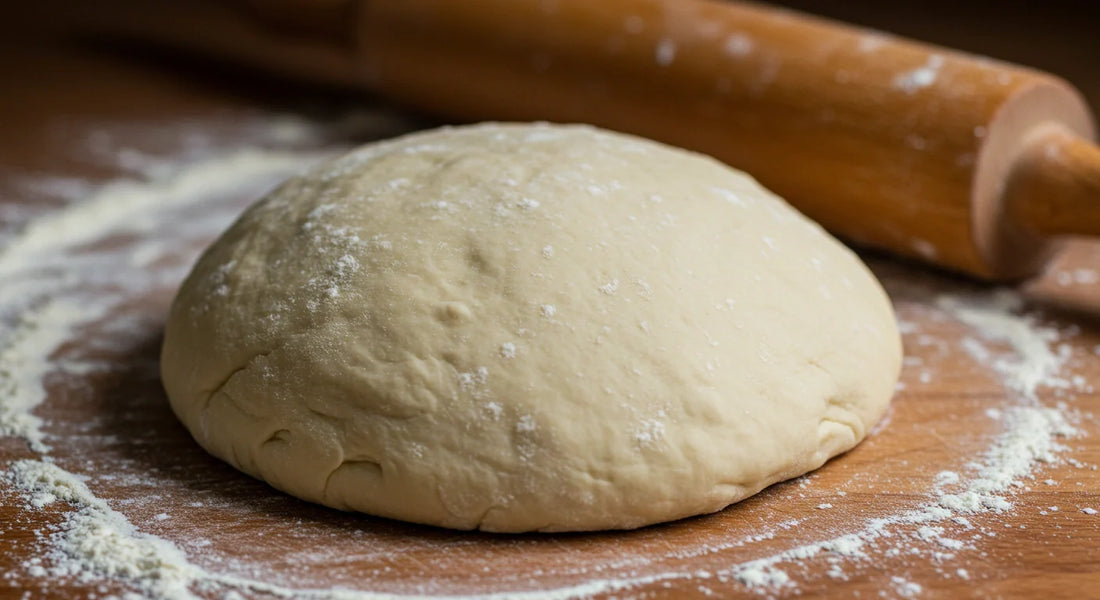
With This Recipe for Vareniki Dough, You’ll Achieve Perfect Dough Every Time
Teilen
Vareniki, a beloved dish in Eastern European cuisine, is known for its delicious fillings and soft, tender dough. Whether you're making them for a family gathering or simply craving a comforting meal, mastering the dough is essential for creating the perfect vareniki.
The dough forms the foundation of the dish, dramatically influencing the texture and flavor of the final product. In this article, we’ll guide you through a step-by-step recipe for vareniki dough, ensuring that you can create the perfect dough every time, whether you’re making traditional or creative fillings.
What Are Vareniki?
Vareniki are a type of dumpling that is a staple in Russian, Ukrainian, and other Eastern European cuisines. These dumplings are filled with a variety of ingredients, such as mashed potatoes, cheese, mushrooms, meat, or even sweet fillings like cherries or blueberries. The dumplings are typically boiled or sometimes fried, resulting in a soft and flavorful dish that can be served as a main course or a side dish.
Definition and Origin of Vareniki
Vareniki originated from the culinary traditions of the Ottoman Empire and have been embraced by various countries in the Balkans, including Serbia, Bosnia, Croatia, and Montenegro. In these regions, vareniki are traditionally served with flatbreads, onions, and a variety of sauces. Over time, numerous variations of the recipe have emerged, incorporating different types of meat, seasonings, and even varying cooking methods.
How Vareniki Dough Differs from Other Dumpling Doughs
What sets vareniki dough apart from other types of dumpling dough is its consistency and elasticity. The dough for vareniki is meant to be soft but not overly sticky, which helps it hold its shape while cooking and prevents the filling from leaking out. It should be smooth and pliable, which makes it easy to work with when rolling out the dough and cutting it into rounds.
The dough for vareniki is also relatively simple, relying on just a few core ingredients like flour, water, eggs, salt, and sometimes oil. This simplicity is what makes vareniki so accessible for home cooks, allowing anyone to prepare these delicious dumplings without the need for complicated techniques.
Why Vareniki Are a Staple in Russian and Ukrainian Cuisine
Vareniki are more than just a meal; they are a part of the cultural fabric of Russia, Ukraine, and other Eastern European countries. These dumplings are often made for special occasions like holidays, family gatherings, and celebrations, but they are also a comforting everyday meal. The versatility of vareniki, with both savory and sweet filling options, makes them suitable for any time of day, from breakfast to dinner.
The tradition of making vareniki is deeply rooted in family life, with many people learning to make these dumplings from their parents or grandparents. The process of making vareniki together is often seen as an opportunity to bond with loved ones, as well as a way to pass down cherished recipes.
Key Ingredients for Perfect Vareniki Dough
The key to making perfect vareniki dough lies in choosing the right ingredients and getting the proportions just right. Here are the main ingredients that contribute to the ideal dough texture.
Flour: The Best Type of Flour to Use for Dough Consistency

The foundation of any good dough is the flour. For vareniki dough, it’s best to use all-purpose flour, which provides the right balance of elasticity and tenderness. All-purpose flour is versatile enough to hold the dough together without making it too challenging, allowing for easy rolling and shaping.
Water: The Role of Warm Water in the Dough
Warm water is a crucial component of vareniki dough. It helps to activate the gluten in the flour, making the dough more pliable and easier to work with. Be sure not to use hot water, as this can cause the dough to become too sticky or difficult to work with. The warm water should be just that—warm to the touch but not scalding.
Eggs: How Eggs Contribute to the Dough’s Texture and Elasticity
Eggs play an essential role in vareniki dough, adding richness and helping to bind the ingredients together. The yolks contribute to the dough’s softness and elasticity, while the whites help to provide structure. This balance of ingredients ensures that the dough retains its structure well when boiled or fried, without becoming too delicate.
Salt: Why Salt is Important in Balancing the Flavor of the Dough
A pinch of salt is added to the dough to balance out the flavors. Salt enhances the taste of the dough, ensuring that the dumplings don’t taste bland. It also helps to strengthen the dough’s structure, making it more manageable when rolling and shaping.
Oil: The Benefits of Adding Oil for Smoothness and Pliability
Some recipes for vareniki dough include a small amount of oil. Adding oil to the dough makes it smoother and more pliable, which is especially helpful when rolling out the dough to a thin consistency. It also adds a bit of richness, giving the dough a soft and delicate texture.
Step-by-Step Recipe for Vareniki Dough
Making vareniki dough may seem daunting at first, but with the right ingredients and technique, it’s a straightforward process. Follow this simple recipe to create the perfect dough for your vareniki.
Preparing the Ingredients
Before you begin, gather all your ingredients: 2 cups of all-purpose flour, one egg, 1/2 teaspoon of salt, 1/2 tablespoon of vegetable oil (optional), and 3/4 cup of warm water. It’s essential to measure the ingredients carefully to ensure the correct balance for the dough.
Mixing and Kneading the Dough
- In a large mixing bowl, combine the flour and salt. Create a well in the center of the flour and crack the egg into it.
- Slowly add the warm water to the flour mixture, a little at a time, stirring as you go. Once the water has been incorporated, add the oil if you’re using it.
- Stir the mixture until it begins to come together, then turn the dough out onto a clean surface and knead for about 5-7 minutes. The dough should be smooth and elastic but not sticky.
If the dough feels too dry, add a little more water, one tablespoon at a time. If it’s too sticky, sprinkle a bit more flour.
Resting the Dough
Once you’ve kneaded the dough, cover it with a damp cloth or plastic wrap and let it rest for 30 minutes. Resting the dough allows the gluten to relax, making it easier to roll out and shape.
Rolling the Dough
After the dough has rested, it’s time to roll it out. Place the dough on a lightly floured surface and use a rolling pin to roll it into a thin sheet, about 1/8 inch thick. Be sure to keep the dough lightly dusted with flour to prevent it from sticking.
Once the dough is rolled out, use a round cutter (such as a glass or cookie cutter) to cut out circles. These will be used to form your vareniki.
How to Use Vareniki Dough for Different Fillings

The beauty of vareniki is their versatility in terms of fillings. You can fill the dough with a variety of savory or sweet options, depending on your preference.
Ideas for Savory Fillings
- Potatoes: One of the most popular savory fillings for vareniki is mashed potatoes, often mixed with cheese, onions, or mushrooms.
- Cheese: A mixture of cottage cheese or ricotta cheese, sometimes flavored with herbs or garlic, makes for a delicious filling.
- Meat: Ground meat, such as beef or pork, can be used as a hearty filling for vareniki, often combined with onions or other vegetables for extra flavor.
Sweet Filling Options
- Cherries: Sweet cherry vareniki are a favorite, especially in the summer when cherries are in season. The tartness of the cherries pairs beautifully with the soft dough.
- Blueberries: Blueberry vareniki are another popular sweet option, often served with a dollop of sour cream.
- Apples: Apple vareniki can be filled with spiced apples, offering a warm, comforting dessert option.
How the Dough Works with Both Simple and More Complex Fillings
Whether you're using simple fillings like mashed potatoes or more complex options like a meat and vegetable mixture, the dough holds up well. Its smooth, pliable texture ensures that the filling stays sealed inside the dumpling, resulting in a soft, tender bite that complements the filling perfectly.
Conclusion
Making perfect vareniki dough is all about using the right ingredients and giving the dough enough time to rest and relax. By following these simple steps—preparing the ingredients, mixing and kneading the dough, resting it, and rolling it out—you’ll be able to create the ideal base for your vareniki, whether you're using savory or sweet fillings.
Remember, the dough is the key to achieving the soft, tender texture that makes vareniki so delicious. Once you’ve mastered the dough, you can experiment with different fillings to find your perfect combination.
Vareniki are a versatile and comforting dish that can be enjoyed in numerous ways. So, gather your ingredients, roll out your dough, and enjoy creating these homemade dumplings with loved ones.

